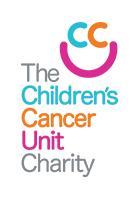Brain Tumours in Children
31 Jan 2018
I attended the International Symposium of Paediatric Neuro-oncology (ISPNO) Conference which took place in Liverpool, last June. This was a 3-day event where International experts from all over the world discussed the biology, diagnosis, management, prognosis and long-term effects of every different type of brain tumour with which children can be afflicted.
The biology is very strong these days. Our young researchers are slowly but surely coming to grips with the metabolic, molecular and genetic drivers that bring about these dreadful tumours. With the discovery of these drivers, receptors can then be identified which will eventually become therapeutic targets and thereby change the landscape with how we treat these cancers. We’re not there yet but one can be hopeful that perhaps in the next 5 years we’ll be not just looking at a histological diagnosis, but a molecular and genetic profile of each tumour, to which we’ll attack using therapy specific for that tumour. This is known as Personalised or Precision Medicine.
As was said by one expert, we’ve brought the biology of paediatric brain tumours into the 21st century, we now just have to drag the therapies from the 20th into the 21st century.
Brain tumours are the commonest solid tumours in children. They come a close second in incidence to Leukaemia, a disease which still stands as the commonest childhood cancer in the paediatric age group. Children with brain tumours present in a variety of different ways. Headaches and morning vomiting are a common method of presentation. However, we are aware that brain cancer in children can present in other ways such as, alterations in balance, visual difficulties, hearing loss, weakness in limbs, seizures, personality change and decrease in school grades, among others.
The difficulty for the primary care doctor when presented with a child with such symptoms is that for every one child with an eventual diagnosis of a brain tumour, 99 others will have a far more benign cause for their symptoms. So who should be sent for a brain scan when they first present? Brain tumours are rare – there is no denying that fact. GPs see lots of patients on a daily basis with headaches which are often caused by a number of different non-cancerous diagnoses in the majority of cases. Such benign causes include migraine, ear infections, tonsillitis, sinusitis or dental caries. Other issues include tension, stress or relationship issues at home or at school.
There has been a campaign in the UK for the past 5 – 6 years called HEADSMART. This started as bit of research which evaluated the ‘Symptom interval’ in children and young adults presenting with symptoms with which turn out to be those of a brain tumour. The symptom interval (SI) was defined as the period of time between the first symptom and the time that a scan (CT or MRI brain) was performed.
At the beginning of this campaign, the average symptom interval in the UK was 15 weeks. (In Northern Ireland, ironically our SI was only 9 weeks’ despite at the time not having a dedicated MRI scanner in the Children’s hospital.) Compared to our colleagues in Europe, where the SI was only 5 weeks, we were doing very poorly indeed. A lot does have to be said about the way in which children who seen and assessed in Europe, which in some way goes about explaining the poor figures.
In a number of countries in Europe there are doctors working as Primary Care Paediatricians. These doctors see and assess children regularly in the community. Such doctors who would invariably have more training in Paediatrics than the average GP and also have available to them more easy access to scans. But these health systems are different and a lot of them may require medical insurance to avail of such services. HEADSMART campaigned with an objective of bringing down the SI in the UK to a figure nearer that of some of our European neighbours. By disseminating information relating to brain tumour in children, to GP, Emergency departments, general paediatric outpatients and community outpatients, the SI throughout the UK has now dropped to be somewhere between 5 and 7 weeks. This was a remarkable and very successful campaign.
The earlier diagnosis of brain tumours may not always improve the prognosis in each and every case but it does go about a long way to maintain and even improve the relationship between families and primary care doctors.
In conclusion, there is a possible sea of change coming with regard to the diagnosis and indeed management of brain tumours. We all wait anxiously to see will such change not only improve the prognosis of these cancer but perhaps go in some way to lessen the long-term effects which are so commonly seen in the survivors.
